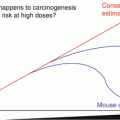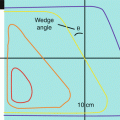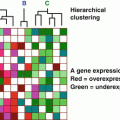, Foster D. Lasley2, Indra J. Das2, Marc S. Mendonca2 and Joseph R. Dynlacht2
(1)
Department of Radiation Oncology, CHRISTUS St. Patrick Regional Cancer Center, Lake Charles, LA, USA
(2)
Department of Radiation Oncology, Indiana University School of Medicine, Indianapolis, IN, USA
Atomic and Nuclear Nomenclature
The atom includes a nucleus and electrons.
Electrons determine the chemical properties of an atom.
“Nuclide” refers to the composition of the nucleus (number of protons and neutrons).
“Nucleons” include protons and neutrons.
The Numbers:
A = Atomic Mass Number (Total protons + neutrons)
Z = Atomic Number (Total protons)
Z determines the number of electrons, and therefore the chemical properties of the atom.
N = Neutrons = A – Z
The four “isos”:
Isotope: same number of protons, different neutrons.
Same chemical behavior, different mass and different nuclear decay properties.
Ex: 125 I and 131 I both behave like iodine, but have different half-lives.
Isotone: same number of neutrons, different protons.
Rarely used.
Isobar: same number of nucleons, different nuclide. (more protons and less neutrons, or vice versa)
“bar” = same mass – think barbell.
Ex: 131 I decays to 131 Xe, which has the same mass number but is a different nuclide.
Isomer: same nuclide, different energy state. (excited vs. non-excited)
Ex: 99m Tc decays to 99 Tc, releasing its excess energy without changing the number of protons or neutrons.
The Four Fundamental Forces
In order of descending strength these are:
Strong Nuclear Force:
The strongest force in nature; “glues” the nucleus together.
Holds the nucleus together, counters the repulsive effect of protons’ positive charge.
Electromagnetic (Coulombic) Force:
~1/100 as strong as the strong force.
Opposites attract. Electrons are attracted by the positively charged nucleus and are more attracted as they get closer; Valence electrons are not strongly attracted and their movements are responsible for all chemical reactions.
Protons repel each other within the nucleus but are held in place by the strong force.
Weak Nuclear Force:
~1/1,000,000 as strong as the strong force.
Works inside particles (between quarks) and is responsible for radioactive decay.
Gravity:
~1 × 10−39 as strong as the strong force.
Not important on the atomic scale.
On Mass
Mass and energy are always interchangeable based on Einstein’s E = mc 2 .
Energy can be converted to mass and mass can be converted to energy by multiplying by c2 (speed of light squared).
As particles approach the speed of light, the velocity must remain constant so as the particle gains energy, it actually gains mass.
There are two common ways to measure mass.
Atomic mass units (AMU):
Defined as 1/12 the mass of a Carbon-12 atom.
Stay updated, free articles. Join our Telegram channel

Full access? Get Clinical Tree








